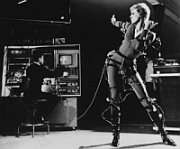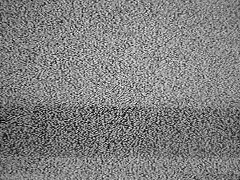
Wednesday, February 25, 2009
Tuesday, February 24, 2009
Crash OST - Howard Shore

01. Crash (03:36)
02. CineTerra (01:04)
03. Mechanism of Occupant Ejection (02:05)
04. Mirror Image (03:24)
05. Where's the Car? (02:39)
06. Sexual Logic (04:07)
07. Road Research Laboratory (02:12)
08. Mansfield Crash (03:37)
09. Chromium Bower (03:38)
10. A Benevolent Psychopathology (02:23)
11. Two Semi-Metallic Human Beings (02:22)
12. Triton (02:45)
13. Accident...Accident... (02:59)
14. A Crushed Convertible (01:55)
15. Prophecy is Dirty and Ragged (05:48)
download
The Cowboy and the Frenchman (1988)
After the international success of Blue Velvet, Lynch was approached by Fiagaro Magazine and Erato Films to create a film as a part of their "The French as Seen by..." TV series. At first Lynch turned them down, but then he caught some ideas and agreed. The Cowboy and the Frenchman was the first time Lynch worked with veteran actor Harry Dean Stanton, who would later be featured in several other Lynch projects.
Other directors featured in the "French as seen by" series include Jean-Luc Godard, Werner Herzog and Andrzej Wajda.
The Amputee (1974)
The Amputee Made for the American Film Institute while Eraserhead was in financial limbo. The AFI was testing two different stocks of black and white video and enlisted Frederick Elmes to test each one. Lynch asked Elmes if he could shoot something with this stock and so he and Catherine Coulson stayed up all night writing script. The result was a one shot scene with Catherine Coulson about a woman attempting to write a letter while a female nurse (played by Lynch) tends to her leg stumps.
The Grandmother (1970)
After the success of "The Alphabet", one of Lynch's friends, Bushnell Keeler recommended that he check out the American Film Institute. Keeler's brother-in-law had been involved in setting up the AFI. Lynch submitted "The Alphabet" and wrote a script for a short film entitled, "The Grandmother." He sent the script and a print of "The Alphabet" to the AFI in Washington. Lynch got a call from George Stevens, Jr. and Tony Vellani at the AFI who wanted to know if Lynch could make "The Grandmother" for $5,000 (it eventually cost $7,200). Lynch agreed.
The short film combines live action, and animation again. The story revolves around a boy who grows a Grandmother to escape neglect and abuse from his parents. Silent (no dialogue) with soundtrack cues used to convey story.
The music in the film was provided by a local group known as Tractor and marked the first time Lynch would work with Alan R. Splet who was recommended to the filmmaker by the soundman on "The Alphabet". Initially, Lynch and Splet intended to use a collection of sound effects records for the film but after going through them all they found that none of them were useful. So, Lynch and Splet took 63 days to make and record their own sound effects.
After finishing "The Grandmother", Lynch took the film to be shown at the AFI in Washington, D.C. The head of the AFI at the time, George Stevens, Jr. found that after all the films had been categorized, only Lynch's defied easy categorization. Stevens and Vellani recommended that Lynch apply to the AFI's Center for Advanced Film Studies. This was a filmmaking conservatory that Vellani had recently started in Beverly Hills. Lynch and Splet both applied for scholarships and on the strength of "The Grandmother" (which won awards at film festivals in Atlanta, Belleview, and San Francisco) they were accepted into the program.
The Short Films of David Lynch (2002)
The Short Films of David Lynch is a DVD collection of the early student and commissioned film work of american filmmaker David Lynch. As such, the collection does not include Lynch's later short work, which are listed in the filmography.
The films are listed in chronological order, with brief descriptions of each film. The DVD contains introductions by Lynch to each film, which can be viewed individually or in sequence.
1966 - Six Figures Getting Sick (Six Times)
1968 - The Alphabet
1970 - The Grandmother
1974 - The Amputee
1988 - The Cowboy and the Frenchman
1996 - Premonitions Following an Evil Deed
or
Saturday, February 21, 2009
Nosferatu, eine Symphonie des Grauens (1922)
 Nosferatu: A Symphony of Horror or simply Nosferatu is a german expressionist vampire horror film, directed by F. W. Murnau, starring Max Schreck as the vampire Count Orlok. The film, shot in 1921 and released in 1922, was in essence an unauthorized adaptation of Bram Stoker's Dracula in Stoker's novel) is an employee at a real estate firm in a fictitious German city called Wisborg (the name of the town being a reference to the actual town Wismar), living with Ellen, his wife. His employer, Knock, receives a mysterious letter. Knock decides to send him to visit Count Orlok in the , with names and other details changed because the studio could not obtain the rights to the novel (for instance, "vampire" became "Nosferatu," and Count Dracula became Count Orlok). Thomas Hutter (Jonathan Harker in Stoker's novel) is an employee at a real estate firm in a fictitious German city called Wisborg (the name of the town being a reference to the actual town Wismar), living with Ellen, his wife. His employer, Knock, receives a mysterious letter. Knock decides to send him to visit Count Orlok in the Carpathian Mountains to finalize the sale of a house. Hutter leaves his wife with his good friend Harding, and Harding's sister Lucy, before embarking on his multiple-month journey.
Nosferatu: A Symphony of Horror or simply Nosferatu is a german expressionist vampire horror film, directed by F. W. Murnau, starring Max Schreck as the vampire Count Orlok. The film, shot in 1921 and released in 1922, was in essence an unauthorized adaptation of Bram Stoker's Dracula in Stoker's novel) is an employee at a real estate firm in a fictitious German city called Wisborg (the name of the town being a reference to the actual town Wismar), living with Ellen, his wife. His employer, Knock, receives a mysterious letter. Knock decides to send him to visit Count Orlok in the , with names and other details changed because the studio could not obtain the rights to the novel (for instance, "vampire" became "Nosferatu," and Count Dracula became Count Orlok). Thomas Hutter (Jonathan Harker in Stoker's novel) is an employee at a real estate firm in a fictitious German city called Wisborg (the name of the town being a reference to the actual town Wismar), living with Ellen, his wife. His employer, Knock, receives a mysterious letter. Knock decides to send him to visit Count Orlok in the Carpathian Mountains to finalize the sale of a house. Hutter leaves his wife with his good friend Harding, and Harding's sister Lucy, before embarking on his multiple-month journey.Download: MPEG Ogg Video MP4
Thursday, February 19, 2009
W.R. - Misterije organizma (1971)
 W.R. - Mysteries of the Organism (Serbo-Croatian: W.R. - Misterije organizma, W.R. - Мистерије организма) is a 1971 film by Yugoslavian director Dušan Makavejev that explores the relationship between communist politics and sexuality, as well as exploring the life and work of Wilhelm Reich. The film intercuts documentary footage with, predominantly, a narrative about a Yugoslav woman who seduces a Russian ice skater. Despite different settings, characters and time periods, the different elements produce a single story of human sexuality and revolution through a montage effect.
W.R. - Mysteries of the Organism (Serbo-Croatian: W.R. - Misterije organizma, W.R. - Мистерије организма) is a 1971 film by Yugoslavian director Dušan Makavejev that explores the relationship between communist politics and sexuality, as well as exploring the life and work of Wilhelm Reich. The film intercuts documentary footage with, predominantly, a narrative about a Yugoslav woman who seduces a Russian ice skater. Despite different settings, characters and time periods, the different elements produce a single story of human sexuality and revolution through a montage effect.
The main elements juxtaposed throughout the film are: Milena is a metaphor for the Yugoslavian working class's struggle for liberation against the totalising influence of Russian communist state. Milena is killed when her sexual encounter with Vladimir Illych (the representative of Russian communism) goes awry. (To make the parallel more obvious, the Russian artist is a full namesake of Lenin (Lenin's proper Russian name was Vladimir Illych). Also, during his speech on the abandoned ship's deck, he assumed a position typical of how Lenin was depicted in numerous statues of him.) He, unable to fully experience his orgasmic urge, beheads her with his ice skate which is the film's metaphor for revolutionary theory. Makavejev dooms self-determination of the Yugslavian people, and the struggle of people worldwide for true freedom, to the fate of being totalised by Russian state communism, and the quest for sexual freedom to be overshadowed by "red fascists".

The song that Vladimir sings in Russian after Milena's murder at the end of the movie is called "François Villon's Prayer" by Bulat Okudzhava. The film has been banned in communist Yugoslavia for about 18 years.
Download links: 01 02 03 04 05 06 07 08 09 10 11 12 13

Wednesday, February 11, 2009
Saturday, February 7, 2009
L' Âge d'or (1930)
Download links: 1 2 3 4 5 6 7
Pass: ilight
The Holy Mountain OST

This is the soundtrack for the legendary cult film 'The Holy Mountain' by Alejandro Jodorowsky. I don't have time to do a film review also, so here is a little background about the film courtesy of Wikipedia:
La montaña sagrada (The Holy Mountain, reissued as The Sacred Mountain) is a 1973 cult film directed by Alejandro Jodorowsky who also participated as actor, composer, set designer, and costume designer. The film was produced by Beatles manager Allen Klein of ABKCO after Jodorowsky scored an underground phenomenon with El Topo and the acclaim of both John Lennon and George Harrison (John and Yoko Ono put up production money). It was shown at various international film festivals in 1973 and limited screenings in New York and San Francisco. However the film was never given wide release until 2007, when a restored print toured the United States, screening with El Topo, and released in DVD format from May 1st.
This soundtrack was included in the boxed set entitled 'The Films of Alejandro Jodorowsky'. This set also included the films La Cravatte, Fando y Lis, El Topo, and The Holy Mountain, as well as the soundtrack for El Topo.
Track List:
01. Pissed And Passed Out
02. Violence Of The Lambs
03. Drink It
04. Christs 4 Sale
05. Cast Out And Pissed
06. Eye Of The Beholder
07. Communion
08. Rainbow Room
09. Alchemical Room
10. Trance Mutation
11. Tarot Will Teach You/Burn Your Money
12. Mattresses, Masks, and Peals
13. Isla (The Sapphic Sleep)
14. Psychedelic Weapons
15. Rich Man In A Fishbowl
16. Miniature Plastic Bomb Shop
17. Fuck Machine
18. Baby Snakes
19. A Walk In The Park
20. Mice And Massacre
21. City Of Freedome
22. Starfish
23. The Climb/Reality (Zoom Back Camera
24. Pantheon Bar (Bees Make Honey...)
download
THX to Digital Meltdown
Friday, February 6, 2009
Premonition Following An Evil Deed (1995)
Premonitions Following an Evil Deed - a film by David Lynch ...Three cops arrive at the body of a young boy in a field. A worried-looking woman is in a living room. Three women are in a garden. Three grotesque figures, one carrying a steaming frying-pan, are beside a naked woman submerged in water in a glass tank, and one of the hideous creatures is tapping the glass with a stick. Then flames of fire fade back to the woman in the living room, and one of the cops arriving and entering the room.












